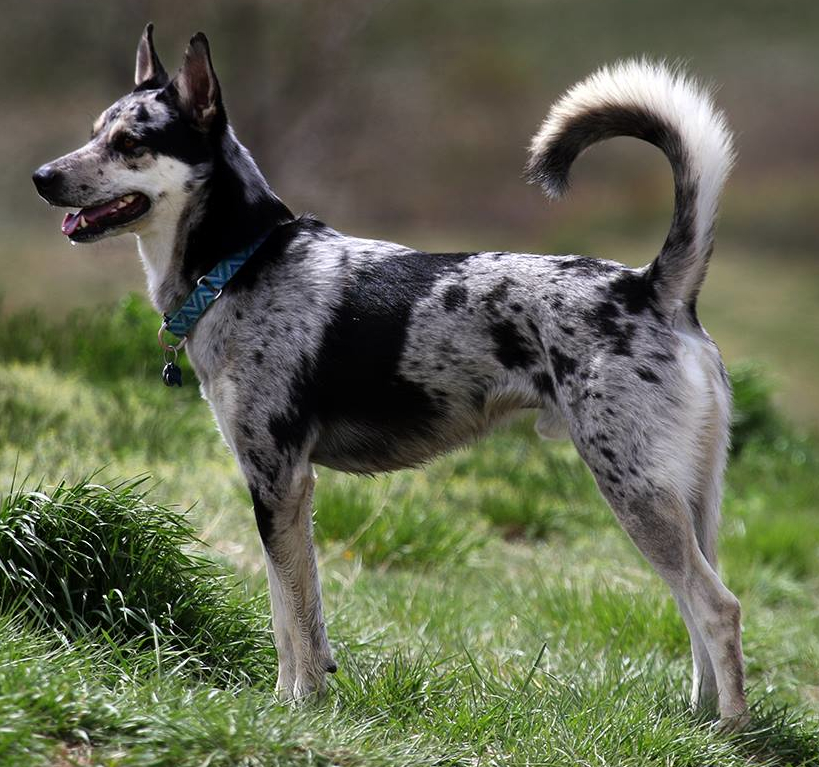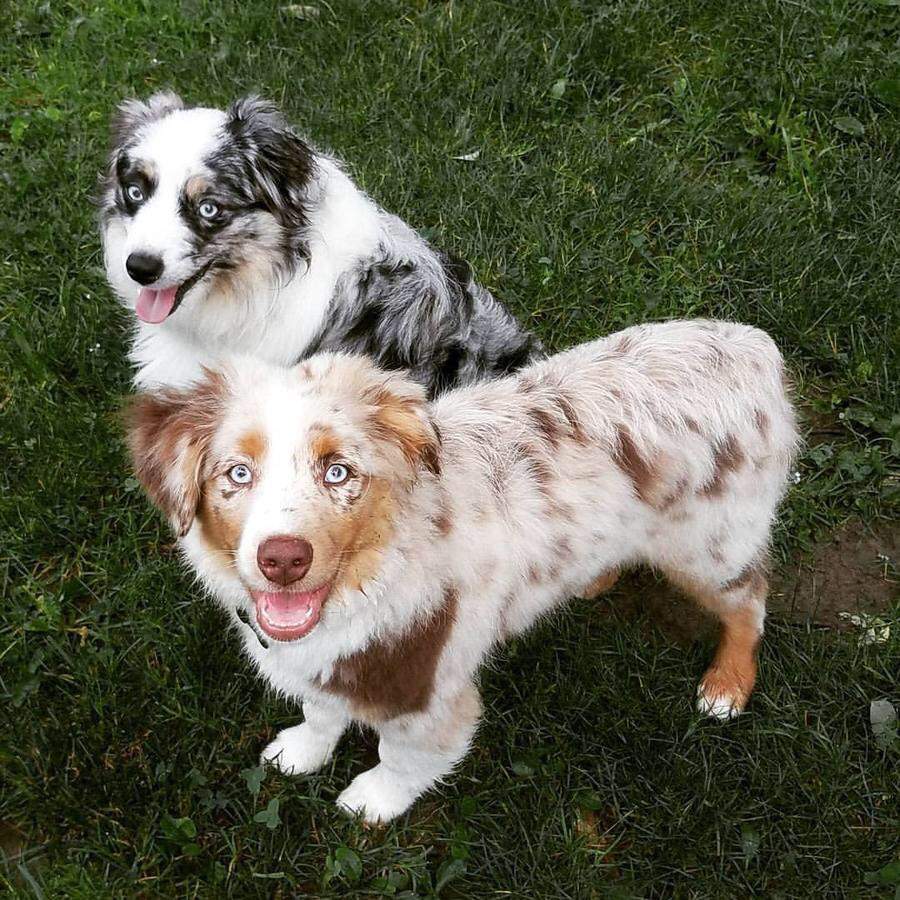Merle Dog Coat - A Pattern Of Unique Beauty
Have you ever seen a dog with a coat that just seems to shimmer with different shades, almost like a painting? That striking look, you know, with the patches of lighter and darker color, is very likely what people call a merle coat. It’s a truly distinctive kind of fur, making each dog that has it stand out in a crowd, and giving them a rather special appearance.
This particular pattern, which some folks might also refer to as dapple, comes about because of something happening with a dog’s genes. It’s a natural thing, actually, that creates these wonderful variations in how a dog’s fur looks. Think of it as a custom design that appears on their body, making every single merle dog quite unique, as a matter of fact.
We're going to take a closer look at what makes this coat pattern so interesting, how it shows up on different dogs, and what it can mean for their overall appearance. It's a fascinating subject, and you might be surprised by some of the things that go into creating such a beautiful and varied look for our furry companions, so.
Table of Contents
- What Makes a Merle Dog Coat So Special?
- What Does a Merle Dog Coat Actually Look Like?
- How Does the Merle Dog Coat Affect More Than Just Fur?
- Which Dog Breeds Show the Merle Dog Coat?
What Makes a Merle Dog Coat So Special?
When we talk about a merle dog coat, we're really discussing a particular kind of genetic blueprint that influences how a dog's fur looks. It's not just a random splash of color; there's a specific gene involved, often referred to as an allele of the pmel gene, that plays a role in creating these striking patterns. This gene has a way of changing things up, leading to all sorts of different colors and designs that can show up on a dog's body. It's pretty neat, you know, how genetics can create such visual variety.
The Genetic Secret of the Merle Dog Coat
The core of what makes a merle dog coat so distinctive lies in its genetic makeup. This particular gene has a way of diluting, or lightening, some parts of the dog's base coat color, while leaving other parts in their original, deeper shade. It's this uneven lightening that gives the coat its signature mottled or marbled look. You might see two different kinds of colored patches on a dog with this pattern, usually, which is a key sign of the merle effect. It’s a very specific sort of genetic trait, causing this unique appearance.
This genetic trait is a naturally occurring thing in quite a number of dog breeds, so. It's not something that was always created by people; it just shows up in some dog lines on its own. However, it’s also a characteristic that some dog breeders have worked to bring into certain lines of dogs because people really appreciate the beautiful look it creates. So, you might find it in dogs that have always carried the gene, or in others where it’s been introduced more recently, in a way.
Is a Merle Dog Coat a Color or a Pattern?
It’s a common thing for people to think of "merle" as a color, but that's not quite right. When we talk about a merle dog coat, we're actually referring to a very specific kind of pattern, rather than a particular shade of fur. The gene responsible for merle doesn't create a new color itself; instead, it changes how existing colors show up on the dog. It takes whatever base color the dog already has and then adds these irregular blotches of fur set on a lighter background of that very same pigment. So, it's more about how the colors are arranged, you see.
For instance, if a dog has a base of solid black, the merle pattern might make parts of that black look like a lighter gray, creating what people often call a "blue merle" dog. Similarly, if the base color is a solid brown, the pattern could lead to lighter tan areas, resulting in a "red merle" or "chocolate merle" appearance. It's this combination of a solid base color with lighter patches that gives that mottled or uneven speckled effect. This is why you'll hear about "blue merle" or "red merle" dogs, as a matter of fact, because the pattern is applied to an existing color.
What Does a Merle Dog Coat Actually Look Like?
A merle dog coat has a very distinct appearance that makes it quite easy to spot once you know what to look for. It's often described as having a mottled or marbled look, with patches of color that are either lighter or darker than the main, underlying fur color. These aren't neat, symmetrical spots; they're usually irregular blotches that seem to be scattered across the dog's body. Each dog with this pattern is likely to have a unique arrangement of these patches, meaning that virtually no two merle coats are exactly alike. It’s pretty special, really.
The Wonderful Ways Merle Dog Coats Appear
Imagine a canvas where someone has splashed paint in a way that creates a beautiful, uneven texture; that’s a bit like a merle dog coat. You'll see these irregular patches of blue or red hair, for example, that are laid over a lighter, or diluted, shade of the very same pigment. So, if the dog's natural color is black, you might see patches of solid black on a lighter gray background. If the base is a deep brown, you might see darker brown spots on a lighter tan. This diluted patchwork of lighter colors is what gives the coat its charm. It’s a very striking visual, you know.
The way this pattern shows up can also differ quite a bit in how strong it appears. Some dogs might have just a subtle speckling effect, almost like a gentle dusting of lighter spots, while others might have much more pronounced and widespread marbling across their fur. This variation in intensity means that even within dogs of the same color, the merle pattern can look quite different from one animal to another. It really adds to the sense that each merle dog got a kind of custom design on their coat, in a way.
Can a Merle Dog Coat Come in Different Colors?
Yes, absolutely! The merle pattern itself isn't a color, as we talked about, but it can show up on a wide variety of base coat colors. This means you can find merle dogs with fur that is blue, which is really a diluted black, or red, which is a diluted brown. You might also see chocolate merles, which are variations of brown, and even fawn merles, which are lighter, softer shades. The solid base color is usually either red/brown or black, and then the merle gene adds those lighter blue/gray or reddish patches, giving that mottled or uneven speckled effect. So, the possibilities for how a merle dog coat can look are pretty extensive, actually.
Most people, when they hear the word "merle," tend to think of the blue variety first. This is likely because blue merle dogs are quite well-known and often featured in pictures. However, it's worth remembering that the pattern can apply to other colors too, creating equally beautiful and distinct looks. The range of colors for a merle dog coat is really quite something, allowing for a lot of visual interest and variety across different dogs and breeds, you know.
How Does the Merle Dog Coat Affect More Than Just Fur?
It's fascinating to consider that the merle gene, which gives a dog its beautiful coat pattern, doesn't just stop at the fur. This gene can have a wider reach, influencing other aspects of a dog's appearance beyond just the hair itself. It’s a pretty powerful genetic element, in some respects, affecting more than just the surface. This is something that often surprises people who are just learning about this particular genetic trait, basically.
Beyond the Hair - Other Features of the Merle Dog Coat
One of the most striking things about many merle dogs is their eyes. It's quite common for dogs with this coat pattern to have really pretty eyes, sometimes even the most beautiful blue eyes. The merle gene has a way of changing eye color, giving them a bright, often piercing, blue shade that stands out against their patterned fur. Sometimes, a dog might even have two different colored eyes, which is called heterochromia, and the merle gene can play a part in that too. It adds another layer of visual interest to these already unique animals, you know.
But the influence of the merle gene can go even further. It can affect a dog's skin tone, causing some areas of their skin to be lighter or darker, mirroring the patterns on their fur. You might also notice its effects on their paw pads and even their nose. These areas can also show a diluted patchwork of lighter colors, just like the coat. So, while the coat is the most obvious sign of the merle gene at work, its presence can be seen in these other subtle ways too, making the dog's overall appearance quite distinctive, you see.
Which Dog Breeds Show the Merle Dog Coat?
Many people are curious about which dog breeds carry the merle gene and can display this wonderful coat pattern. The truth is, it's found in quite a number of different breeds, and you might be surprised by how many! Some breeds are very well-known for their merle coats, while in others, it might be a less common, but still present, variation. It’s a trait that adds a lot of character to a dog's look, really, no matter their size or original purpose.
Finding the Merle Dog Coat in Various Breeds
Merle dog breeds are, as you might guess, canines that predominately show this scattering of mottled patches on their coat. You can find this pattern in all sorts of dogs, from small companions to medium-sized herders, and even some bigger breeds. For instance, you might think of breeds like the Australian Shepherd or the Border Collie when you picture a merle dog, as they often come with these striking patterns. These breeds, among others, really showcase the beauty of the merle dog coat in all its varied forms, too.
There are also specific examples like the merle French Bulldog, which is a color coat variant of the standard French Bulldog. In this case, the merle gene partners the dog’s usual solid coat with these dark and light patches, creating a distinct look for the breed. It's a reminder that dogs come in a very wide variety of colors and patterns, from dark to light, solid to spotted, and everything in between. The merle dog coat is just one of these many fascinating genetic designs that makes each dog unique, you know.

Merle-Locus | Coats and Colors

Merle | Veterinary Genetics Laboratory

What Is A Merle Dog Coat at Ben Waterbury blog